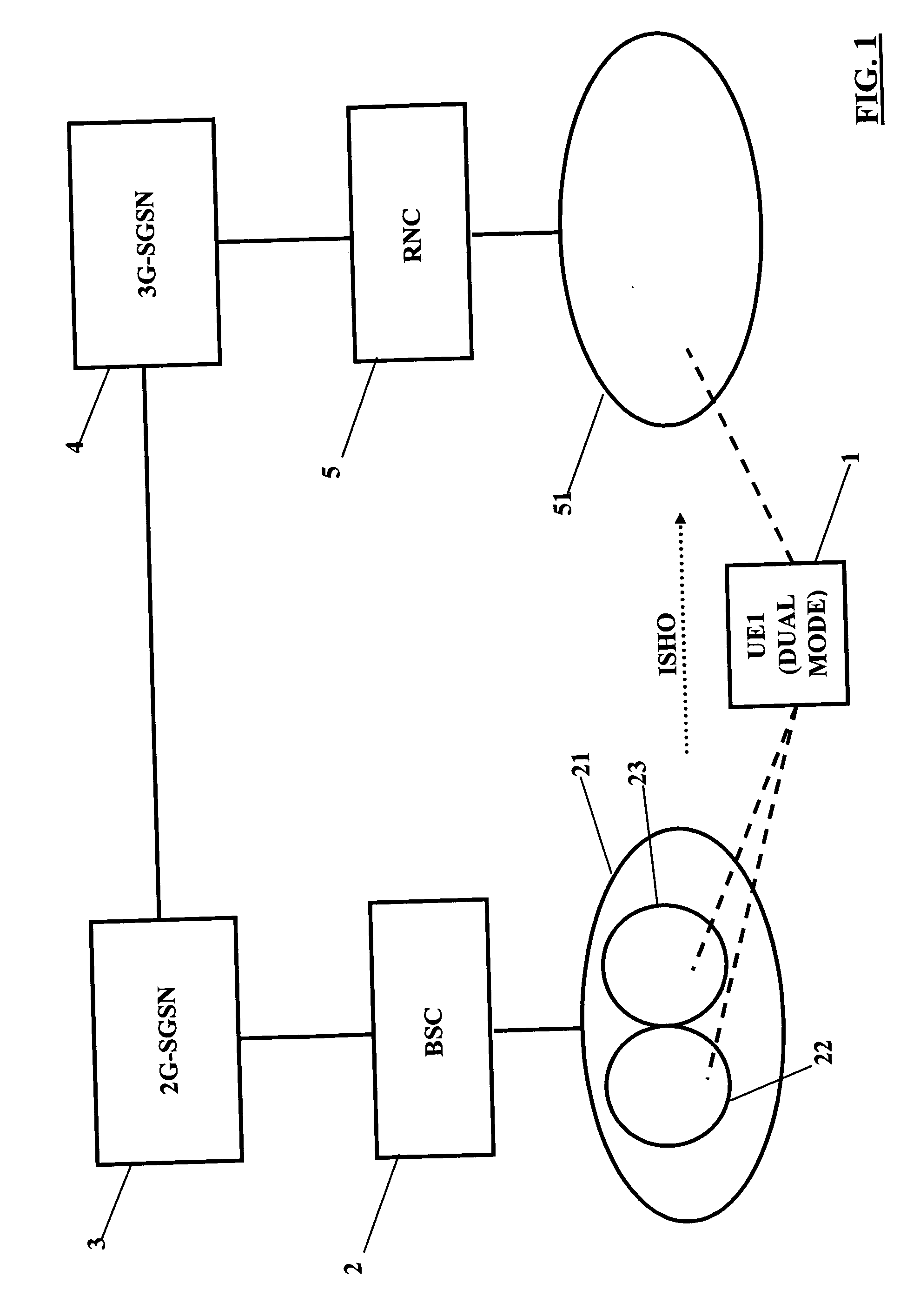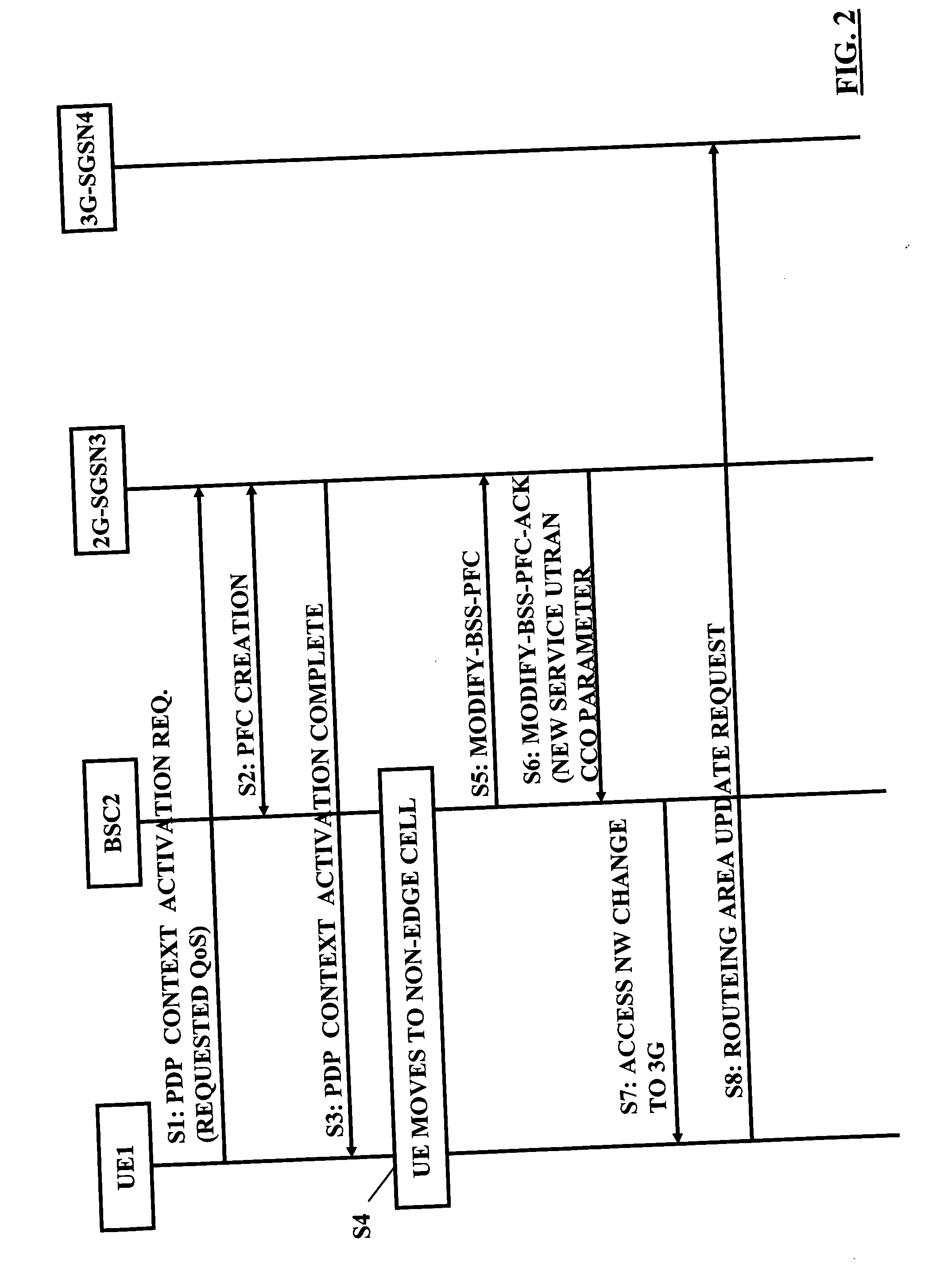Communication connection control mechanism in a core network ordered access change scenario
a control mechanism and communication connection technology, applied in the field of communication connection control mechanism in a core network ordered access change scenario, can solve the problems of increasing network costs, affecting the service quality of the subscriber, and not being available in the complete network environment, so as to improve the call success rate of a requested service and/or connection quality level, and stabilize the service or connection quality level. , the effect of improving the quality of the connection
- Summary
- Abstract
- Description
- Claims
- Application Information
AI Technical Summary
Benefits of technology
Problems solved by technology
Method used
Image
Examples
second embodiment
[0086] In the situation it is assumed that the UE1 is located in a cell of the first access network subsystem 21, 2, specifically in a cell having lower service level capability than another cell. The UE 1 tries to set-up a communication connection with a service level (i.e. a connection parameter) which can not be provided by the cell it is located. For example, the UE 1 is in the non-EDGE capable cell 23 and requests a PDP context activation with QoS, which can be only provided in EDGE cells (or in 3G) (step S11). The core network control element, e.g. the 2G-SGSN 3, acknowledges this request and recognizes that the requested service level is not available at the cell 23. Then, the 2G-SGSN 3 creates a signalling connection, like a PFC, towards the BSC 2 (step S12). The creation of PFC is done, for example, with a CREATE-BSS-PFC Request message. The message sent from the 2G-SGSN 3 comprises an indication element that a access change is to be performed, such as a Service UTRAN CCO ...
third embodiment
[0097] Now, the present invention is described in connection with FIGS. 5 and 6 as well as FIG. 1.
[0098] In the third embodiment, a situation similar to that of the second embodiment can be assumed. This means, for example, that there is a packet switched (PS) connection of the user equipment UE 1 in a communication system. The connection may either be already established or in the process of being set up (indicated by step S31 (PDP context activation request) in FIG. 5). Furthermore, there is a situation that the core network control element, such as the 2G-SGSN 3, recommends to the radio controller (e.g. BSC 2) a cell change of the UE 1 connection to another cell or access network, e.g. a cell change from 2G (GPRS) to 3G (WCDMA). The BSC 2 generally follows this recommendation and gives to the user equipment (mobile) UE 1, for example, a packet cell change order (PCCO).
[0099] According to FIG. 5, the instruction or recommendation to change the cell is given to the BSC 2 by means ...
PUM
 Login to View More
Login to View More Abstract
Description
Claims
Application Information
 Login to View More
Login to View More - R&D
- Intellectual Property
- Life Sciences
- Materials
- Tech Scout
- Unparalleled Data Quality
- Higher Quality Content
- 60% Fewer Hallucinations
Browse by: Latest US Patents, China's latest patents, Technical Efficacy Thesaurus, Application Domain, Technology Topic, Popular Technical Reports.
© 2025 PatSnap. All rights reserved.Legal|Privacy policy|Modern Slavery Act Transparency Statement|Sitemap|About US| Contact US: help@patsnap.com



